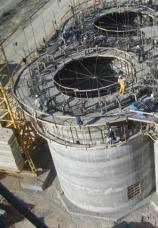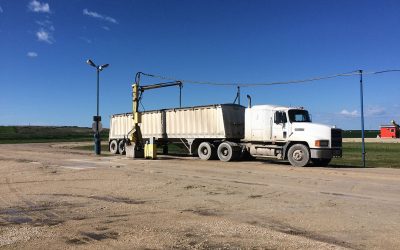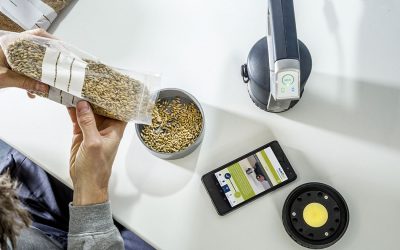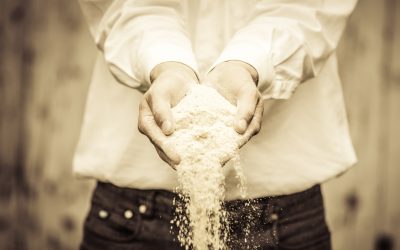Building a new feed mill: Go or no-go

Engineering and Consultancy agency TebodinCCE recently organised a workshop on “strategic considerations in the animal feed industry”. One of the subjects that passed in review was on financial feasibility studies and scenario analysis of large projects. The following article discusses the main items for a financial and economic screening of a new project.
Building a new feed mill (or any other large project) requires a considerable amount of financial input. And everyone likes to know upfront what the financial viability of the project will be. Is it feasible and will I earn back my money in the timeline set? During the decision making process for building a new plant or extending an existing plant many questions on the financial feasibility need to be answered. Besides a proper balancing of the pro’s and cons with which financial means the mill will be paid, the financial risks need to be mapped and valued. The aim of a financial feasibility study is to determine the economic and financial feasibility of a project following predetermined critical success factors within a fixed reliability interval. A project is financially feasible when its return is high enough to cover an acceptable risk. For example, one can put money into a government loan with a fixed interest rate of 4%. The risk is very low, but the revenue of that loan is also low. Perhaps an investment in the animal feed sector brings a return of 12%, but the risk to achieve this is obviously greater. The financial side of a project consists of the investment (capital expenditure; Capex), revenue, operational costs (operational expenditure; Opex) and rest value or re-investments. Here: cash is king.
Cash flow can be determined by taking revenue minus purchasing costs minus remaining costs (operating expenses incl. depreciation and interest), which results in operational profit (or EBIT, Earnings Before Interest and Tax). Of this amount, the taxes, depreciation and interest needs to be deducted to obtain the free cash flow. Figure 1 examples the cash flow of a project.
Valuing investments
There are several (traditional) methods to value an investment over time. The simplest one is the payback period, implying the period in which the investment is earned back using free cash flow. This method, however, does not predict anything about what happens after the investment has been paid back. Improving valuation of a project can be achieved by calculating Return on Investment (ROI). This performance measure is used to evaluate the efficiency of an investment or to compare the efficiency of a number of different investments. The formula of the investment ROI = (average gain – average cost)/average cost. ROI is a very popular metric because of its versatility and simplicity. That is, if an investment does not have a positive ROI, or if there are other opportunities with a higher ROI, then the investment should/should not be undertaken. However, the right timing for gain calculation is difficult and the method it less suited for projects with different scales of investment (e.g. comparing investments of $100,000 with an investment of $10 million). When using this ROI, make sure you understand what inputs are being used.
Net Present Value
A more accurate evaluation method is expressed in Net Present Value (NPV). NPV is used in capital budgeting to analyse the profitability of an investment or project. NPV analysis is sensitive to the reliability of future cash inflows that an investment or project will yield. NPV compares the value of a currency unit today to the value of that same currency unit in the future, taking inflation and returns into account. If the NPV of a prospective project is positive, it should be accepted if it is within an acceptable timeframe. However, if NPV is negative, the project should be rejected. For example, if an investor wants to purchase an existing feed mill, he would first estimate the future cash flows that this mill would generate, and then discount those cash flows into one lump-sum present value amount, say $6.3 million. If the owner of the mill was willing to sell his business for less than $6.3 million, the investor would likely accept the offer as it presents a positive NPV investment. Conversely, if the owner would not sell for less than $6.3 million, the purchaser would not buy the mill, as the investment would present a negative NPV at that time and would, therefore, reduce the overall value of the feed mill. NPV calculation also has a downside, because the Cost of Equity (CE; the return that stockholders require for a company) is not known.
NPV is also complicated to calculate with projects that have different run times. Figure 2 explains a simplified impact of CE for an investment of € 20 million and an annual free cash flow of € 4 million. Length of the project is 15 years. If CE is 5% NPV turns out to be € 21.519 million and if CE is 15% NPV is € 3.402 million. The leverage effect makes financing of the project with foreign capital attractive. In Figure 3 the impact of payback time is illustrated. If in the same example CE is 5% it is worthwhile to manage the investment (the mill and its machinery) well, because postponing the moment of re-investment until after the end of payback time will immediately result in a profit.
Levels of go and no-go
A project starts with an idea and for example a brief calculation on the back of a beer mat. At this moment already a decision is made for a go or no-go of the project. If that decision is in favour of a ‘go’, then a broad study can be set up to evaluate the strategic considerations of the project. Again a decision is made for go or no-go. If the project still looks feasible, then a closer look should be taken at market considerations, but now on a more tactical level. If the signal is still green after this exercise the operational aspects need to be evaluated and once these data are available a final go or no-go can be expressed. Figure 4 expresses this decision-making process. The cycle of feasibility studies is summarised in Figure 5. It is important to follow these steps to avoid pitfalls such as temptation, pride or ‘gut feeling’. Who is not familiar with going shopping for a frying pan at a large shopping mall and returning home with a whole new kitchen?
Critical success factors
Following the Pareto analysis, Critical Success Factors (CSFs) are the 20% critical factors or activities required for ensuring 80% of the success of your business. Essential in determining the CSFs of your organisation is to determine what is central to its future and achievement of that future. Identifying CSFs is important as it allows firms to focus their efforts on building their capabilities to meet the CSFs, or even allow firms to decide if they have the capability to build the requirements necessary to meet CSFs. Generic CSFs are subjects such as: new product development, good distribution, and effective advertising, but these are difficult to quantify. It is better is to define factors that have the most impact on your NPV. Figure 6 illustrates the CSFs that are most likely to be important to a feed mill operation.
Every CSF has it own normal distribution, which can be expressed in a Gauss-curve (or bell curve) with a peak at the mean. To measure the variability in a normal distribution the standard deviation (SD) is calculated: A low standard deviation indicates that the data points tend to be very close to the mean, while high standard deviation indicates that the data are “spread out” over a large range of values. For example, average annual salary costs are 3.6 million, with an SD of 0.1 million (Figure 7). This means that annual salary costs are within a range of 0.1 million from the mean (about 68%, assuming a normal distribution) and thus vary between 3.5 and 3.7 million, while almost all salary costs (about 95%) are between 0.2 million from the mean (3.4 – 3.8 million). If SD was zero, then salary costs would be exactly 3.6 million.
Monte Carlo Analysis
Obviously CSFs with a low standard deviation are much easier to manage than the ones with a high standard deviation. Therefore it is advisable to focus more on the CSFs that have a high standard deviation, and thus have a higher impact on the NPV. A tool to evaluate the distribution and expectation of the NPV is the Monte Carlo Analysis, which is a problem solving technique used to approximate the probability of certain outcomes by running multiple trial runs, called simulations, using random variables. In the case of our feed mill project the normal distribution curves of the most important CSFs are compiled into a formula, whose outcome gives us a statistical distribution and expectation of our future NPV. This is impossible to do by hand, but computers were invented to do this calculation. When different scenarios for NPV are calculated, they can be compared. Figure 8 gives an example of two scenarios which have the same mean NPV, but a different distribution and standard deviation. The standard deviation is a measure for the risk of a project. The smaller the SD, the lower risk involved.
Sharpe ratio
The SD of the project equals the level of risk. The higher the SD becomes the higher the NPV needs to be (the project is feasible when its return is high enough to cover an acceptable risk). Suggest that this regression would follow a linear distribution, then actual NPV above the line is worth taking the risk (accepting the SD) of that feature. Take for example energy costs that can fluctuate considerably (high SD), but by managing energy use accurately, total use can be lowered, thus resulting in a higher return on investment. To more accurately predict these risks the Sharpe ratio is used. This reward-to-variability ratio is a measure of the excess return (or risk premium) per unit of risk in an investment asset. The formula for this calculation is: S = (return – risk-free return)/SD. A higher value gives a better return per risk taken. For example, if we want to compare two scenarios: Scenario A has a return of 18%, a risk-free return of 4% and SD of 3.25%. Scenario B has the same returns but a SD of 1.62%. Using the Sharp formula, A has an outcome ratio of 4.4 and B of 8.9, meaning B is the scenario of choice. So the Sharp ratio is a good instrument to see what risk is present at what return.
In summary
In conclusion, a feasibility study can be divided into 8 steps:
1. Definition of scope and process,
2. Determining of Critical Success Factors,
3. Determining of basic scenario (expert opinion needed),
4. Collecting and analysing of information,
5. Translating information to Capex, Opex or earnings,
6. Sensitivity analysis (CSFs and their impact on NPV),
7. Scenario analysis (Monte Carlo analysis) and 8. Risk analysis (Sharpe ratio).
Once these steps have been followed a final go (or nogo) for the project can be given and the feed mill can be built.
Feed Tech wants to thank Martin Rattink, consultant at TebodinCCE, for his input in this article.
For further information contact m.rattink@tebodincce.nl
Website: www.tebodincce.nl (in English)
NOTE: TO VIEW THE PDF VERSION – CLICK HERE











